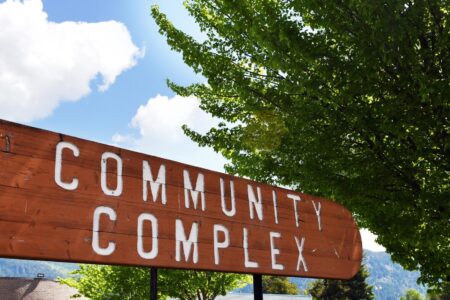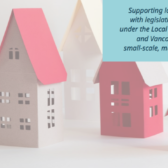A Line in the Red Sands
By Michael Jessen
Prosperity today means nothing if it undermines the conditions on which prosperity tomorrow depends. – Tim Jackson
Sustainability is not an ornament to hang on a policy tree in the future.
Sustainability is about our capacity to endure and our commitment to living in balance within the ecological limits of a finite planet.
In a just-released report, the Swiss bank Sarasin says “civilization actually requires 1.4 planets in order to maintain its current standard of living in the long run.”
Clearly, business as usual is not an option and Nelson is not immune to this dictum.
But things in Nelson are about to get seriously out of balance thereby threatening the community’s sustainability.
The Kutenai Landing project is supposed to add 162 homes on Nelson’s central waterfront; the proposed Nelson Landing development would add 193 housing units to the eastern waterfront; and the Granite Pointe Golf Club wants to build up to 300 residences and some commercial buildings around its Rosemont course.
Nelson’s city council has adopted the Path to 2040 Sustainability Strategy and has the ability to begin aligning future development in the city with the guidelines in that document – not tomorrow or the next day, but NOW.
It is time for the City of Nelson to draw a line in the sand, whatever its colour.
The amendments to the Official Community Plan and the rezoning applications of the proposed Village Houses of Nelson Landing and Granite Point projects should be slowed down until the city determines if the developers will meet some new criteria.
Passive houses can save 90 percent on heating costs
First, all new buildings constructed in the city should be built to conform to the performance characteristics of a ‘Passive House’ construction standard. Developed in Germany, the Passivhaus standard is both a designation and a design philosophy.
A Passive House is a very well-insulated, virtually air-tight building that is primarily heated by passive solar gain and by internal gains from people, electrical equipment, cooking, etc. Energy losses are minimized. Any remaining heat demand is provided by an extremely small source.
Avoidance of heat gain through shading and window orientation also helps to limit any cooling load, which is similarly minimized. An energy recovery ventilator provides a constant, balanced fresh air supply.
The result is an impressive system that not only saves up to 90 percent of space heating costs, but also provides a uniquely terrific indoor air quality.
The Passivhaus Institute recommends a short list of strategies for achieving its standards. These include: high levels of insulation, reduction of thermal bridges, use of ‘energy-gain’ windows and a heat-recovery ventilator (HRV).
There are more than 25,000 certified Passivhaus buildings in Europe, including homes, schools, office buildings and a supermarket. A growing number of local governments are incorporating Passivhaus standards in their building codes.
The objective of adhering to the Passivhaus principles is to achieve exceptionally low lifecycle operating costs for heating and cooling buildings.
Every building must consume no more than 15 kilowatt-hours of energy per square metre of floor area. While R-2000 and most other green building standards govern only energy used for heating and cooling, the Passivhaus standard applies to all energy – including lights, appliances, entertainment and hot water heating.
Solar hot water systems can supply 60 per cent of needs
Second, all new buildings constructed in the city should incorporate a solar hot water system.
Hot water demands the second largest amount of energy in our homes, after space heating, and it represents about 30 per cent of total energy use in our homes.
A solar water heater can supplement up to 60 per cent of the water heating energy needs for a typical family of four. In Canada, there is enough solar energy to generate an average of 2,500 kWh of energy per year.
The City of Colwood on Vancouver Island is aiming to help 1,000 residents install solar hot water heaters in their homes after receiving a $3.9 million federal clean energy grant. Homeowners will recoup their investment with energy cost savings in five to 10 years.
A solar hot water system has been installed on Fort St. John’s city hall and on the District of Peachland’s community centre.
Three Vancouver Island hospitals will have rooftop solar thermal energy systems up and running by the end of March utilizing funding from the Public Sector Energy Conservation Agreement.
PSECA is a three-year partnership between BC Hydro, the province and Terasen Gas. The organization, along with SolarBC and Natural Resources Canada, recently committed $2.8 million toward equipping 24 schools, nine post-secondary facilities, and five hospitals in B.C. with solar panels.
Third, all new buildings constructed in the city should utilize a geoexchange system for any residual heating requirements.
Geoexchange is the industry’s term used to describe an alternative to traditional oil- gas- or coal-fired heating, ventilation and air conditioning (HVAC) systems. They are also referred to as earth energy systems, or geothermal heat pump systems.
The idea is to take advantage of the ground’s heating and cooling properties (the same properties that make any basement cooler in the summer and warmer in the winter) to heat or cool entire buildings.
This heat ‘exchange’ between the ground and the building is accomplished by using standard pump and compressor technology.
Photovoltaic cells make homes energy producers
Fourth, all new buildings constructed in the city should be wired to eventually incorporate solar photovoltaic (PV) panels to convert the sun’s energy into electricity.
Solar PV is a form of energy generation that converts solar radiation into electricity that can be fed into the electricity grid, used immediately on-site, or stored on site for later use.
Today’s PV cells can convert roughly 15 per cent of the solar energy that hits them into electricity. Current development of ‘thin film’ photovoltaics promises to reduce costs significantly in the very near future.
Photovoltaic panels have been used commercially since the 1980s. Since then, efficiency has gone up while costs have come down. Millions of solar PV systems have been installed worldwide, and the technology is well established in Ontario. Several ‘solar farms’ – large ground-based arrays of solar panels – have recently been installed in the province.
Ontario’s microFIT Program allows individuals and businesses who install solar rooftop PV systems to sell the generated electricity for 80.2 cents/kWh for a 20 year contract.
Fifth, all new buildings constructed in the city should make use of all available PowerSense Residential/Commercial energy saving initiatives offered by Fortis BC.
That utility announced a new program on February 4 that allows small businesses in the Kootenays to upgrade to energy efficient lighting systems at virtually no cost. The FortisBC/LiveSmartBC Lighting Installation Program (FLIP) is a $5 million partnership between the Province of BC and Fortis.
The program will arrange for and provide eligible small businesses with the direct installation of up to $5,500 in energy-efficient equipment such as lamps, occupancy sensors and controls.
By following these five guidelines any future structures built in Nelson will be truly sustainable utilizing today’s best available technology. They will be virtually zero net energy consumers.
Why is this important now?
The City of Nelson owns and operates its own hydroelectric generating facility on the Kootenay River at Bonnington Falls.
Nelson Hydro, which has been operating in the city since 1896, is very unique in that it is one of the few municipally owned and operated utilities to have its own generation, transmission and distribution systems.
Nelson Hydro has 9,800 customers, 60 per cent of whom are within the city limits. The system load is 167,000 megawatt hours per year.
In the summer, the utility produces 70 per cent of its customer’s electrical needs and 40 per cent in the winter. On an annual basis, Nelson Hydro can satisfy about 55 per cent of customer electrical demand.
The remaining 45 per cent is purchased from Fortis BC at a cost of about four cents per kilowatt hour. Power purchase represents approximately 30 per cent of Nelson Hydro’s annual operating costs, according to the utility.
Nelson Hydro sales in 2009 totalled $12,302,435 with expenses of $8,785,583, resulting in a profit of $3,516,852. Using the 30 per cent figure that means it cost Nelson Hydro about $2,635,675 to purchase power in 2009.
So the rationale for the five new building regulations is to ensure that future power purchases won’t be necessary, further eating into the utility’s profit.
But these new regulations need to be supplemented with an aggressive program to retrofit the existing buildings owned by Nelson Hydro’s customer base in order to reduce demand for electricity.
Energy efficiency and conservation are the lowest cost options for meeting energy needs and provide many other environmental, economic and social benefits, including cost savings, lower environmental load by avoiding GHG and local air, water and land emissions associated with energy production and consumption, local economic development opportunities and associated new jobs, enhanced reliability of energy system and reduce price volatility, and improved energy supply security.
Renewable energy helps create new jobs and industries.
We need to start looking at energy in a completely contrary way. In the past there were clear reasons why governments and corporations encouraged people to consume more energy. We live in a different world today.
It no longer makes sense for governments in the developed world to encourage their people to consume more power. It is now clear that using our energy more efficiently contributes more to our economic well-being than producing more energy.
“Government has set a goal to reduce the growth in electricity demand so that, by 2020, 10,000 GWh of currently forecast needs will be met through demand reduction measures,” is the first of the energy conservation and efficiency policies in the BC Energy Plan.
The third policy states: “Encourage utilities to pursue cost effective and competitive demand side management opportunities.”
Demand side management (DSM) initiatives have been used by many utilities for years to help moderate electrical and gas load growth. It has been traditionally seen as a means of reducing peak electricity demand so that utilities can delay building further capacity or making expensive power purchases.
By reducing the overall load on an electricity network, system reliability can be increased. In addition, DSM applied to electricity systems provides significant economic and environmental benefits.
The question of sustainability is staring Nelson in the face today. Will we put an additional strain on the city’s hydro system, thereby guaranteeing that the only way it will continue to make a profit is through never-ending rate hikes?
Or will we say, the hydro system is a precious resource that can provide even higher profits to the city if we ensure that all future and existing customers use its electricity in a sustainable manner?
“You never change things by fighting the existing reality,” said Buckminster Fuller. “To change something, build a new model that makes the existing model obsolete.”
The City of Nelson needs a new development model, not in 2040 but today.
Nelson has the builders, architects, engineers, plumbers, electricians who can begin building this new model. It has institutions like Selkirk College, Columbia Basin Trust, the Nelson and District Credit Union, and the Nelson and District Chamber of Commerce that by working together with the city can make this new model a reality.
We do not lack the dynamic forces to make this vision happen, but in order for it to blossom, we need to make critical decisions now.
Resources
Nelson’s Path to 2040 Sustainability Strategy is at http://www.nelson.ca/assets/City~Services/Development~Services~and~Sustainability/SustainabilityStrategy.pdf
What is a Passive House? See http://www.passivehouse.us/passiveHouse/PassiveHouseInfo.html
Germany’s Passivhaus Institute is at http://www.passiv.de/07_eng/index_e.html
Tyee.ca article about Passivhaus is at http://thetyee.ca/News/2011/01/25/Passivhaus/
Read more about solar hot water at http://www.solarbc.ca/ and http://www.cansia.ca/solar-energy-101/what-solar-thermal
Find out more about Solar Colwood at http://www.solarcolwood.ca/
What is geoexchange? See http://www.geo-exchange.ca/en/what_is_geoexchange_p10.php
What is solar photovoltaic (PV)? See http://www.cansia.ca/solar-energy-101/what-solar-photovoltaics-pv and http://www.cmhc-schl.gc.ca/en/co/maho/enefcosa/enefcosa_003.cfm
Nelson’s solar PV potential can be found at https://glfc.cfsnet.nfis.org/mapserver/pv/municip.php?n=2955&NEK=e
Ontario’s microFIT Feed-in Tariff Program overview is at http://microfit.powerauthority.on.ca/pdf/microFIT-Program-Overview.pdf
The Ontario Sustainable Energy Association has a Solar PV Community Action Manual downloadable at http://www.ontario-sea.org/Storage/21/1266_OSEA_PV_Community_Action_Manual.pdf
The Fortis BC PowerSense page is at http://www.fortisbc.com/powersense/powersense_main.html
Find out more about FLIP at http://www.fortisbc.com/about_fortisbc/news/releases_2011/fbc2011Feb4.html and http://www.nelson.ca/assets/City~Services/Electrical~Services~Nelson~Hydro/Documents/ps_direct_inst_broch_old_srn.pdf
The BC Energy Plan – Energy Conservation and Efficiency Policies are at http://www.energyplan.gov.bc.ca/PDF/BC_Energy_Plan_Conservation.pdf
Michael Jessen is a writer and an efficiency and renewable energy advisor and operates Zero Waste Solutions, a consultancy specializing in aiding companies, communities, and individuals in the sustainable use of resources. He can be contacted at zerowaste@shaw.ca. Full disclosure, he would love to help make the vision described above a reality.


























